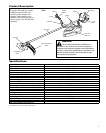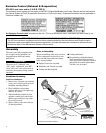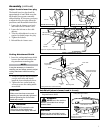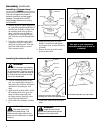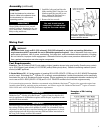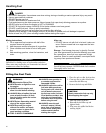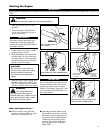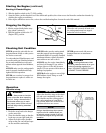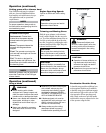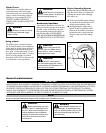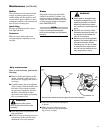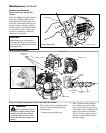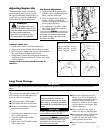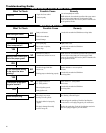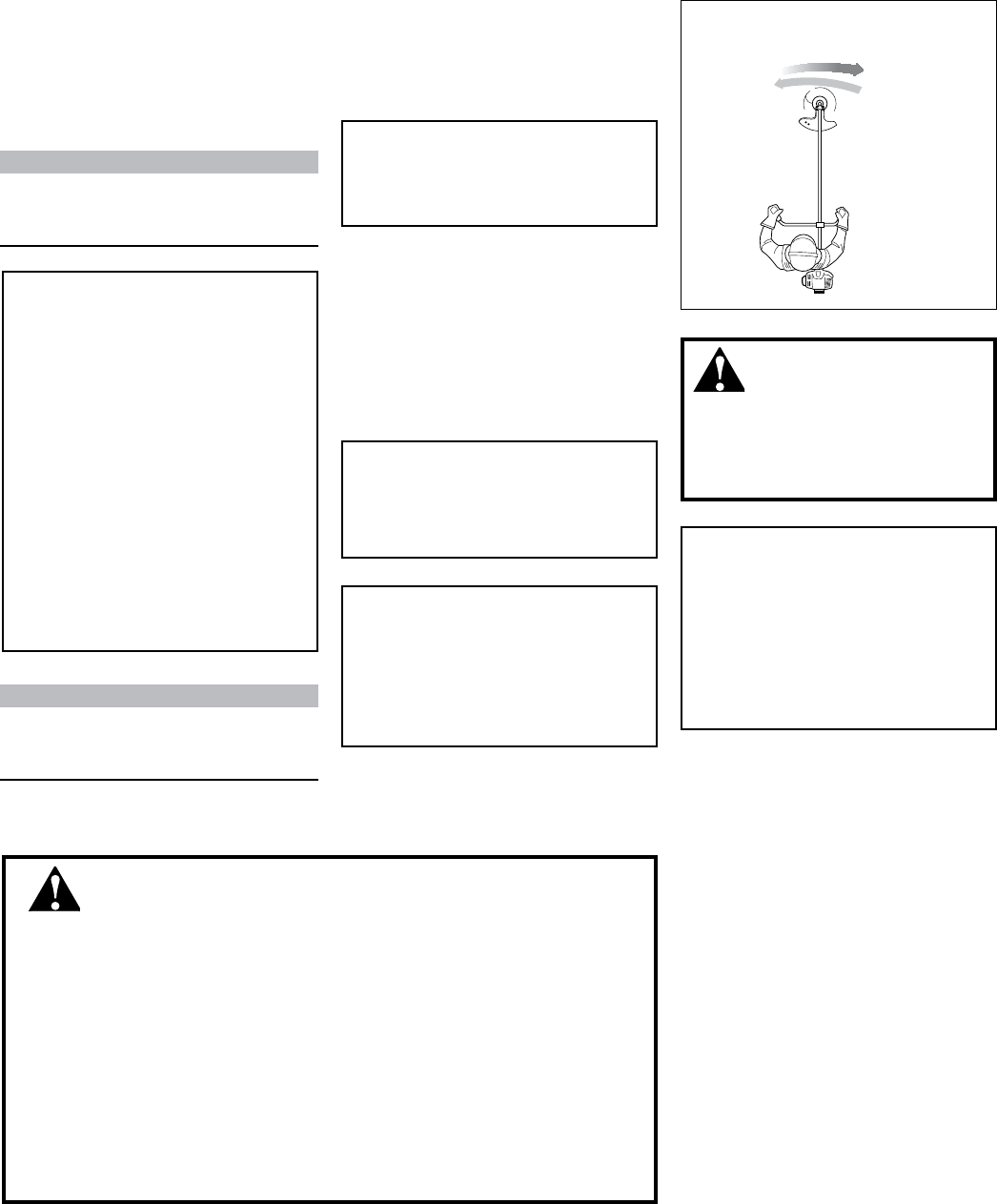
13
Your Shindaiwa unit may be equipped
with one of several Shindaiwa trimmer
head models, each with features for spe-
cific applications and/or operational
requirements.
Cutting grass with a trimmer head
NOTE:
For proper operation, always refer to
the instructions accompanying the trim-
mer head being used.
CAUTION!
Operation at low rpm can lead to
premature clutch failure.
Engine Operating Speeds
Operate at full throttle while cutting
grass.
Cut from left to right
Cut
Return
Trimmer head styles:
Semi-automatic. Trimmer line is
indexed when the operator taps the
trimmer head on the ground during
operation.
Manual. The operator indexes line
manually with the grass trimmer
stopped.
Fixed. The operator must stop the
unit and add new lengths of trimmer
line manually.
Flail. This device, designed for
clearing weeds and light brush, fea-
tures three nylon blades attached to
the head by pivots.
NOTE:
Additional hardware may be required to
mount the Fixed Line or the Flail type
trimmer heads.
CAUTION!
Do not push the rotating line into
trees, wire fences or any material
that could tangle or break line ends.
Hold the grass trimmer so the trimmer
head is angled slightly into the area to be
cut. To ensure maximum trimmer-line ser-
vice life, cut only with the tip of the trim-
mer line. Cut grass by swinging the unit's
trimmer head from left to right. Keep the
trimmer head horizontal.
Trimming and Mowing Grass
CAUTION!
Operation of trimmer without a cut- ■
ting attachment shield and using
excessive line length can lead to
premature clutch failure.
Operation at low rpm can lead to ■
premature clutch failure.
WARNING!
Remove all objects such
as rocks, broken glass, nails, wire,
or string, which can be thrown or
become entangled in the cutting
attachment.
CAUTION!
Use only exible, nonmetallic line
recommended by the manufacturer.
Never use, for example, wire or
wire-rope, which can break off and
become a dangerous projectile.
Operation (continued)
Before working with a blade- ■
equipped unit, always inspect and
clean the area of objects that could
interfere with or damage the blade.
Never use a blade near sidewalks,
■
fence posts, buildings or other
objects that could cause injury or
damage.
Never use a blade for purposes
■
other than those for which it was
designed.
Whenever you strike a hard object
■
with a blade, always stop the
brushcutter and carefully inspect
the blade for damage. NEVER
OPERATE THE BRUSHCUTTER
WITH A DAMAGED BLADE!
A blade-equipped unit must be
■
equipped with a bicycle-type han-
dlebar or barrier bar as well as a
harness or shoulder strap.
Always make sure the cutting
■
attachment shield is properly
installed before operating this unit.
Using a blade
WARNING!
Operation (continued)
Brushcutter Shoulder Strap
A shoulder strap provides additional pro-
tection against blade thrust. In addition,
a shoulder strap gives significant support
and comfort to help ensure safe and effi-
cient operation. When operating a unit
with a blade, make sure both the handle
and shoulder strap are adjusted to the size
of the operator using the unit.



